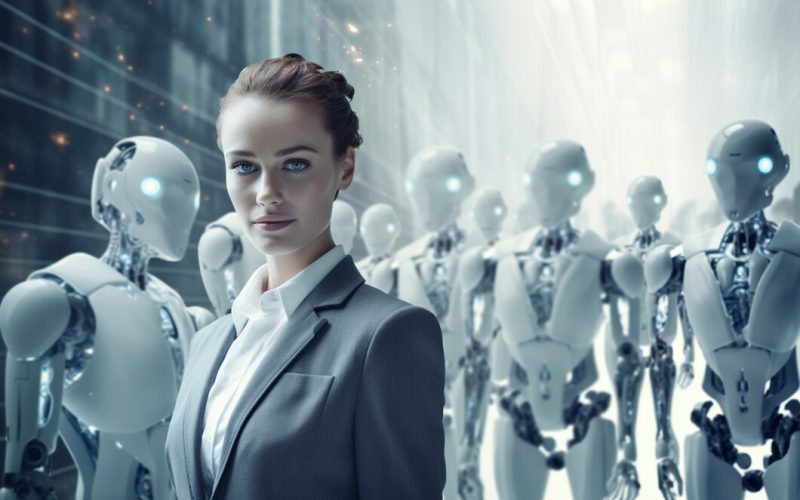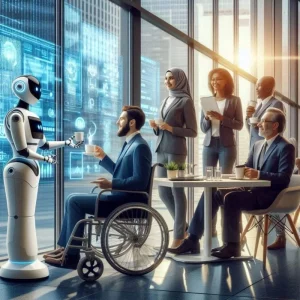Introduction
Accessibility is about making sure that everyone, no matter their abilities, can easily use and enjoy things like buildings, services, and technology. People with disabilities have often faced challenges when trying to access information or technology. However, recent advancements in technology, especially Artificial Intelligence (AI), are helping to overcome these obstacles, creating a more inclusive world.
AI can change the way we solve accessibility problems. With smart systems and technology that adapts to needs, AI makes it easier for people with disabilities to communicate, find information, and interact with the world. In this article, we will look at how AI is improving accessibility, how it works, and the benefits it offers to people with different disabilities.
The Rise of AI in Accessibility
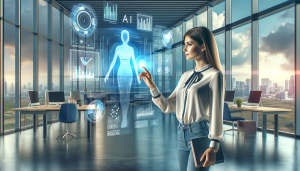
In recent years, Artificial Intelligence (AI) has become an important tool for helping people with disabilities. As technology improves, AI is being used more to make daily life easier. From voice assistants to smart devices, AI helps people with physical, mental, and sensory challenges to access services, communicate, and live on their own. With more new ideas being developed, AI is playing a bigger role in improving accessibility and creating more opportunities for everyone to live inclusively.
AI is making daily tasks easier for people with disabilities. Simple activities like reading, watching movies, or shopping can be hard for some. With AI, these tasks are becoming simpler. For example, AI can help people who can’t see by reading books aloud or describing what’s happening in a movie. Voice assistants like Siri and Alexa help people control their homes, set reminders, or play music by just speaking. These tools help people live more independently and improve their quality of life.
The Growing Impact of AI in Creating an Inclusive Society
As AI keeps improving, its impact on accessibility will keep growing. More AI tools will be created to meet the needs of people with disabilities. These new technologies are making the world more inclusive, helping everyone, no matter their abilities, take part in society. From self-driving cars to AI-based education tools, the future of AI in accessibility is about giving equal chances to all. As technology moves forward, the goal is to help people with disabilities live independent and empowered lives.
The Role of AI in Accessibility
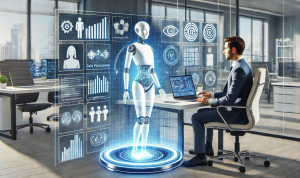
The Benefits of AI in Improving Accessibility
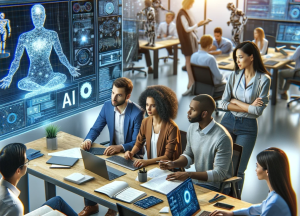
AI brings many important benefits when it comes to improving accessibility. These benefits not only help individuals but also have a positive effect on society as a whole. Here are the main benefits:
1. More Independence
AI helps people with disabilities live more independently. With tools for mobility, communication, and learning, AI makes daily tasks easier, allowing people to do things they might not have been able to do before.
2. Better Integration into Society
AI makes it easier for people with disabilities to be part of society. Whether at work, school, or in public places, AI helps reduce the barriers that have historically kept people with disabilities separated from others.
3. Affordable Solutions
While some assistive devices can be expensive, AI-powered tools are often cheaper and easier to use. For example, voice-activated apps can replace costly specialized equipment for communication or mobility, making these technologies more accessible to more people.
4. Personalized and Customizable
AI can be adjusted to meet the needs of each person. Whether it’s changing speech-to-text software for someone with hearing loss or creating a learning tool for someone with cognitive challenges, AI can be customized to provide better support.
5. Faster and More Accurate
AI tools can do tasks more quickly and accurately than humans. For people with disabilities, this means fewer mistakes and less time spent on tasks. For example, AI transcription services are faster and more precise than doing it by hand, helping people access information more easily.
Bridging the Digital Divide
Even though AI has many benefits, some people still have trouble accessing these technologies. The digital divide is the gap between those who have access to modern technology and those who do not. Many people with disabilities may not have the money or training to use AI tools. To fix this, governments, organizations, and tech companies need to make AI tools more affordable and easier to use. For example, schools or programs can teach people how to use AI-powered devices. Companies can also create cheaper versions of these tools to make sure everyone can use them.
Applications of AI in Real-World Scenarios

AI is making a big difference in many areas that affect the lives of people with disabilities. Here are some examples of how AI is being used in the real world:
1. Healthcare
AI is helping make healthcare more accessible. For example, AI-powered telemedicine tools allow people with mobility issues or those living far away to get medical advice without leaving home. AI is also used in diagnosing health conditions, helping doctors find problems faster and making healthcare more accessible.
2. Workplace Inclusion
AI is helping create more inclusive workplaces. Tools like speech-to-text and text-to-speech help people with hearing or speech impairments do their jobs better. AI is also making hiring processes more fair by reducing bias, which helps promote diversity in the workplace.
3. Public Services
AI is improving public services to be more accessible. For example, AI systems in public transportation help people with disabilities by offering real-time support and suggesting the best routes for them to take.
Challenges and Future Directions

While AI is certainly making a positive impact on accessibility, there are challenges that need to be addressed. Issues such as the digital divide, privacy concerns, and the need for greater awareness of AI’s potential are some of the obstacles that must be overcome.
Looking ahead, AI has the potential to continue improving accessibility. With advancements in machine learning and natural language processing, AI systems will become even more sophisticated, offering even greater benefits to people with disabilities.
Looking Ahead: The Future of AI in Accessibility
Comparative Table: Traditional Accessibility vs. AI-Powered Accessibility
| Feature | Traditional Accessibility Solutions | AI-Powered Accessibility Solutions |
|---|---|---|
| Cost | High cost for specialized tools (e.g., Braille readers, hearing aids) | More affordable options, like smartphone apps and AI-powered hearing aids |
| Adaptability | Limited adaptability to individual needs | Highly customizable and adaptable to specific requirements |
| Efficiency | Slow and labor-intensive (e.g., manual captioning) | Fast and accurate, with real-time processing (e.g., automatic speech recognition) |
| User Experience | May require significant training or assistance | Easy-to-use interfaces with AI assistance improving usability |
| Independence | Often requires assistance from caregivers or others | Allows for greater independence and autonomy in daily tasks |
Conclusion: A More Inclusive Future
Artificial Intelligence is playing a pivotal role in improving accessibility for people with disabilities. From communication tools to mobility aids, AI is enhancing independence, efficiency, and inclusion. By embracing AI, we can create a future where everyone, regardless of their abilities, can access the same opportunities and live their lives to the fullest.
The integration of AI in accessibility is not just a technological advancement; it’s a societal shift toward greater equality and inclusion. As AI continues to evolve, the possibilities for improving accessibility are limitless, and the future looks brighter for individuals with disabilities.






